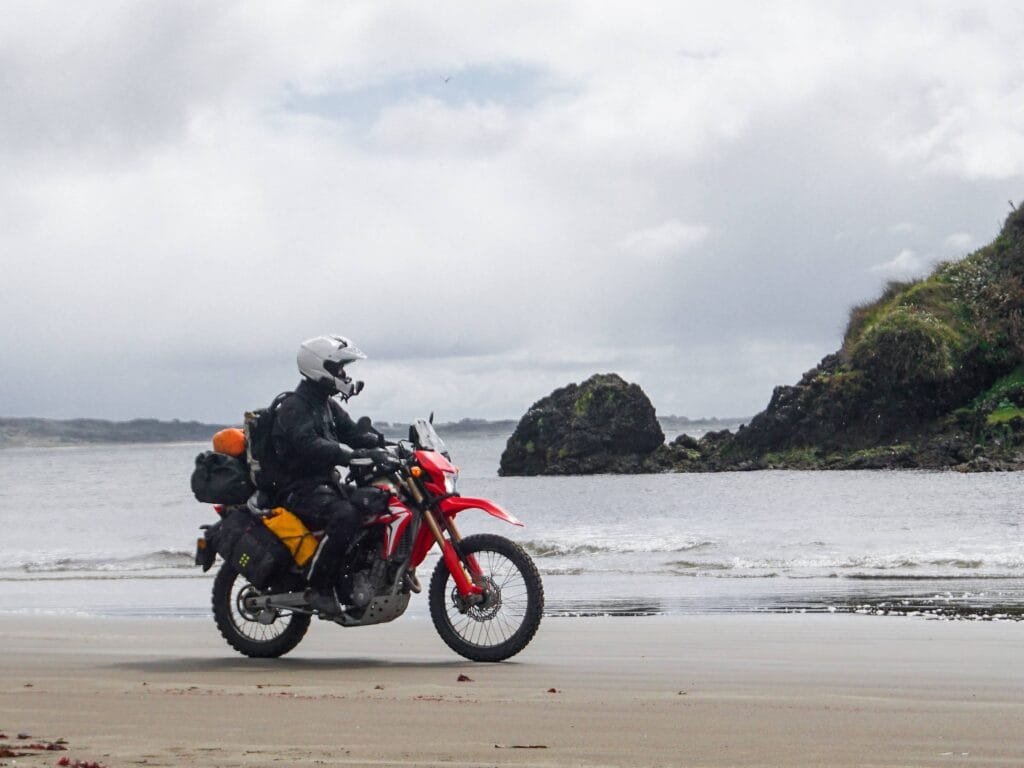Chiloé Island: A place cold paradise
Close your eyes, listen to waves hitting the hull of the ferry, and feel the wind roaring above. Forget the rain for a moment. Try to fathom where in the world you’ve ended up: a tiny dot next to Chile, yet only three times smaller than Belgium. A final stop before the long road to the southernmost reaches of the world. Chiloé Island.
Never before have I visited a place so many locals call paradise, and I get it. This island made my soul come alive. Maybe it were the sea lions, penguin, and dolphins that popped out of the sea. Maybe it was the sun setting the shoreline aglow. Or maybe it was the island’s magic working its charm. Chiloé Island, two simple words, but they’ll cast a spell on you if you let them.
We arrived on a dreary Friday and headed toward Ancud, one of the island’s main towns. The evening’s goal? Find a wild camping spot. Though it was only 6 p.m., the heavy clouds and relentless rain had already ushered in nightfall. We huddled in a bus stop, scrolling through iOverlander (a great app for overlanders, especially to find camping spots, although a bit outdated in Europe). After marking a few options, it was time to wrestle my wet hands into my motorcycle gloves and hop back on the bike.
After checking three wild camping spots and two closed campgrounds, frustration began creeping in. All I wanted was shelter and food—was that really too much to ask for? But as always, a solution wasn’t far off. Google led us to a hotel that doubled as a campsite. They had to be open! We pitched our tent, grabbed supplies from a nearby store, and settled in with a drink atop cliffs carved by centuries of wind and waves. And just like that, peace washed over me. With beauty like this, cold and frustration is easily forgotten.
The next day, with rain still hammering down, we sought refuge in a cabaña 20 minutes outside Ancud, the warm birthplace of my first blog post about Chile. On Sunday evening, the owners of the cabaña and their grandson invited us into their home. There was no mistaking their deep love for the island. Though they enjoyed traveling and seeing the world, they were always drawn back to Chiloé, their natural paradise of windswept beaches, crashing waves, and century old trees.
They weren’t the only ones we met on the island who felt this way. Be it people we met in the minimarkets, a lady at a bus stop during lunch or locals gathering mussels along the beach, many of them shared their sense of connection to the island. How beautiful to be so in love with the place you live!
Once the rain eased, it was time to explore this paradise. And what a reward it was! Paved roads gave way to gravel, which eventually disappeared into sand along the coast. Yes, you read that correctly! On several occasions, the road was no more than a strip of hard-packed sand on the beach. Is there anything that screams freedom louder than shifting sand under your wheels, teasing your balance as laughter dances on the wind, blending with the crash of waves? I don’t think so.

Chiloé Island, dreary to some, a cold paradise to others. My top tip? Go west! Explore the little roads. Visit remote minimarkets. Talk to the people you meet. Camp on the beach. Watch the sea, spot the wildlife, and, above all, let the road lead you.
You won’t be disappointed!
















Always enjoy reading your great writings. Wonderful how well you are doing even with all of that rain and cold. Keep enjoying each and every day and experience.
Thanks a lot Christy! As it goes in life, everything is with ups and downs, but we wouldn’t change a thing. It means the world to me that you keep making the time to read about our adventures.